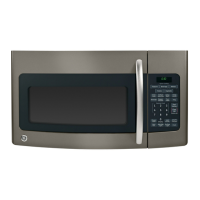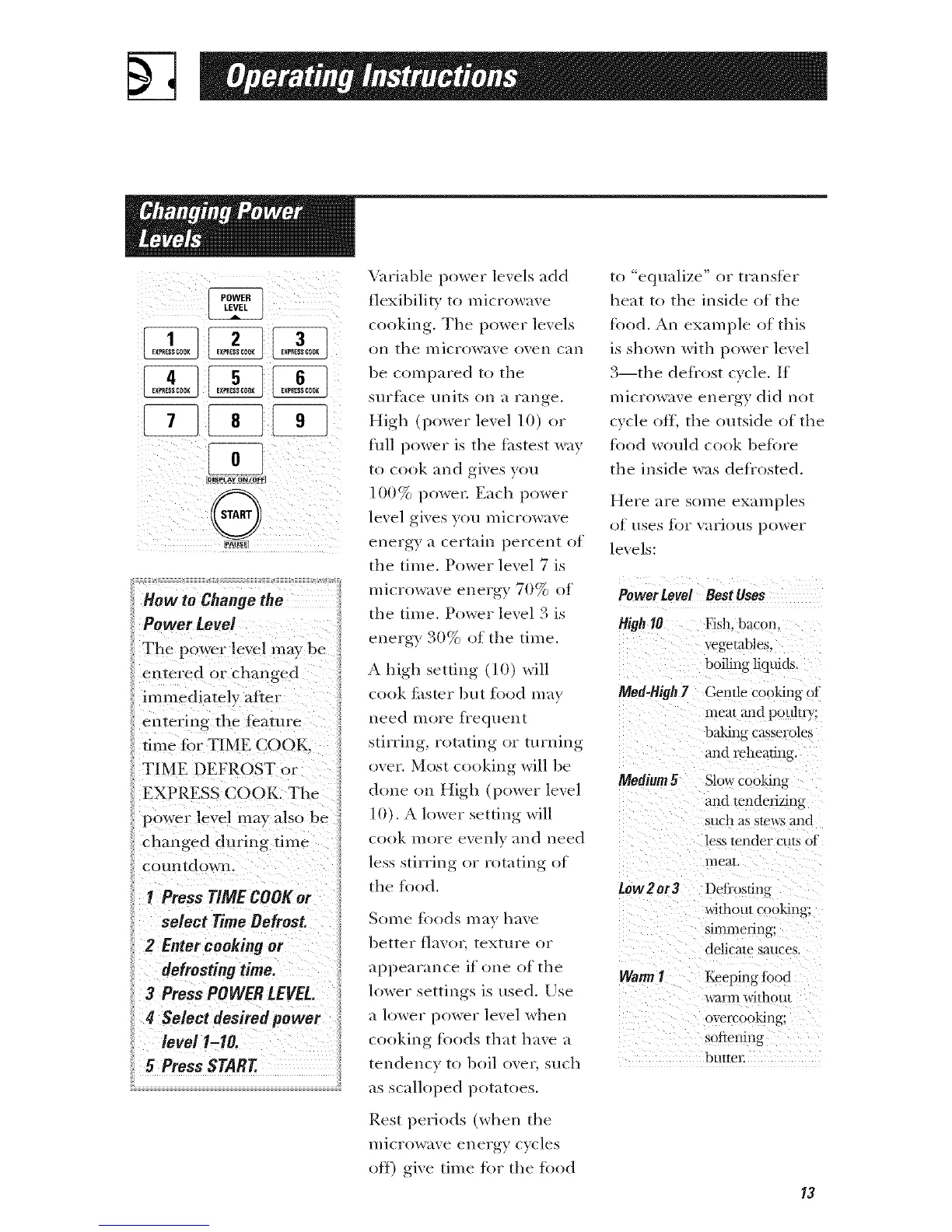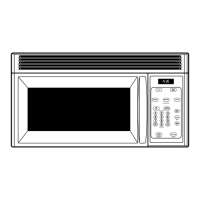II I IIII
Power tevel _
Thepowei!!eve! be
enteiied or Changed
immediately alter
entering t!le feature
time ibr TIME COOK,
TIME DEFROST or
EXPRESS COOK: The
power !eve! inay alsO be
Changed during time
I Press T/ME COOKor
select Time Defrost.
2 Entercooking or
defrosting time.
3 PreSsPOWERLEVEL:
4 SeleCt desiredpower
level I'1o.
s Presssraer.
Varial)le power levels add
flexibili W to microwave
cooking. The power levels
on the microwave oven can
be compared to the
surface units on a range.
High (power level ]0) or
full power is the fastest way
to cook and gives you
100% power. Each power
level gives you microwave
energy a certain percent of
the time. Power level 7 is
microwave energy 70% of
the time. Power level 3 is
energy 3()% of the time.
A high setting (l 0) will
cook thsmr but tood may
need more frequent
to "equalize" or/ranstcr
heat to the inside of the
food. An exan/pie of this
is shown wi/h power level
3 the defl'ost cycle. !f
microwave energy did not
cvcle oil the on/side of/he
food would cook betore
/he inside was defrosted.
Here are son/e exalll pies
of uses tot various power
levels:
PowerLeve/ BestUses
High10 Fish, bacon.
vegeral_les,
boiling liquids.
Meal-High7 Gentle cooldng of
meat and poulu'y;
baldng casseroles
stirring, rotating or turning
over. Most cooking will be
done on High (power level
10). A lower setting will
cook more evenly and need
less stirring or ro/ating of
the tood.
Some %ods may have
better _]avoF, texture or
appearance if one of the
lower settings is used. Use
a lower power level when
cooking toods that have a
tendency to 1)oil over, such
as scalloped potatoes.
and whe;ning
Medimn5 Slowcooking
and tenderizing
Stlch as ste_ and
less tender cuts of
I_oeaT,
tow2or3 Defl'osfin_
without c{_oMna':
simmering;
delicate hal ICES.
WarmI Keepingtood
waI_n wi/hout
overcooking:
softening
buneE
Rest periods (when the
microwaxe energy cycles
off) gixe time tOT the tood
13

